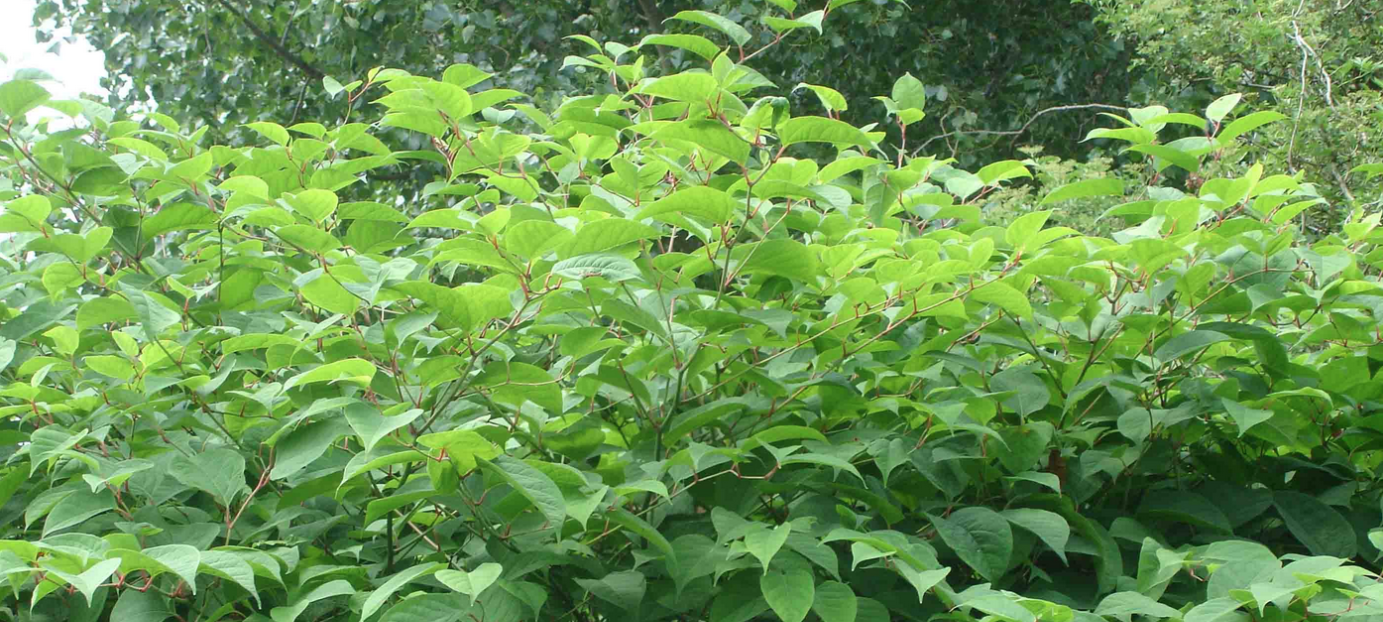
Japanese knotweed on Scalby Beck
The Borough Council has drafted a Japanese Knotweed management plan but this relates solely to the land that it owns which forms only a very small area of the banks on Scalby Beck. The Wild Trout Trust has strongly recommended that Scalby Beck Angling Club liaise with landowners, the Environment Agency and the local rivers trust to ascertain if a programme of eradication could be initiated. It is not known if this was ever carried out.
What is Japanese Knotweed and why is it such a problem?
Japanese knotweed is an invasive weed that that is capable of damaging property and is almost impossible to kill or eradicate. It grows at the alarming rate of up to 10-20cm a day. Its roots and rhizomes can grow to a depth of 3m. Even after herbicide treatment has “eradicated” the aerial and surface growth, the deep underground rhizomes can remain in a viable state and may do so for up to twenty years. It can re-emerge and re-grow on its own accord at any time and especially if the contaminated ground is disturbed.
Property or land owners having land which is affected by Japanese knotweed, are responsible for the control of the invasive weed. Failure to do so could lead to unwanted disputes, substantial fines, or even imprisonment. If you own or manage a property or land which is affected by Japanese knotweed, you are responsible for the control of the invasive weed. Failure to do so could lead to unwanted disputes, substantial fines, or even imprisonment.
If a landowner has knotweed growing on his land he should make every effort to control the knotweed and prevent this from spreading onto a neighbouring property. If he fails to do this he could be held responsible for the damage caused by the encroachment. If you are able to prove that your property is affected by knotweed because of encroachment the landowner of the adjacent property could be held responsible.
How to identify Japanese Knotweed on Scalby Beck
Japanese knotweed appears differently according to the season. In spring new shoots that emerge are red or purple and are similar in appearance to asparagus spears. The leaves are rolled up and dark green or red in colour.
During the summer the knotweed leaves are green and heart/shovel shaped and can be 20cm across. In late summer early autumn small clusters of white flowers will appear. The stems are mostly hollow and bamboo like and the general growth habit has a distinctive zigzag appearance.
In Autumn the dense covering of leaves will remain, however, they start to turn yellow and wilt as we move into September and October. The knotweed plants are still about 2-3 metres tall and the hollow stems start to turn brown.
During late autumn and the beginning of winter the knotweed canes die off and the weed becomes dormant. The leaves turn yellow, then brown and fall off. The canes are hollow, dark brown and brittle and they collapse upon one another.
What to do if you do identify Japanese Knotweed on Scalby Beck
If you know the landowner then contact them immediately. Otherwise contact Peter Kay secretary of Scalby Beck Angling Club, 55 Leighton Close, Crossgates, Scarborough YO12 4LB. 01723 863852 / 07777650923